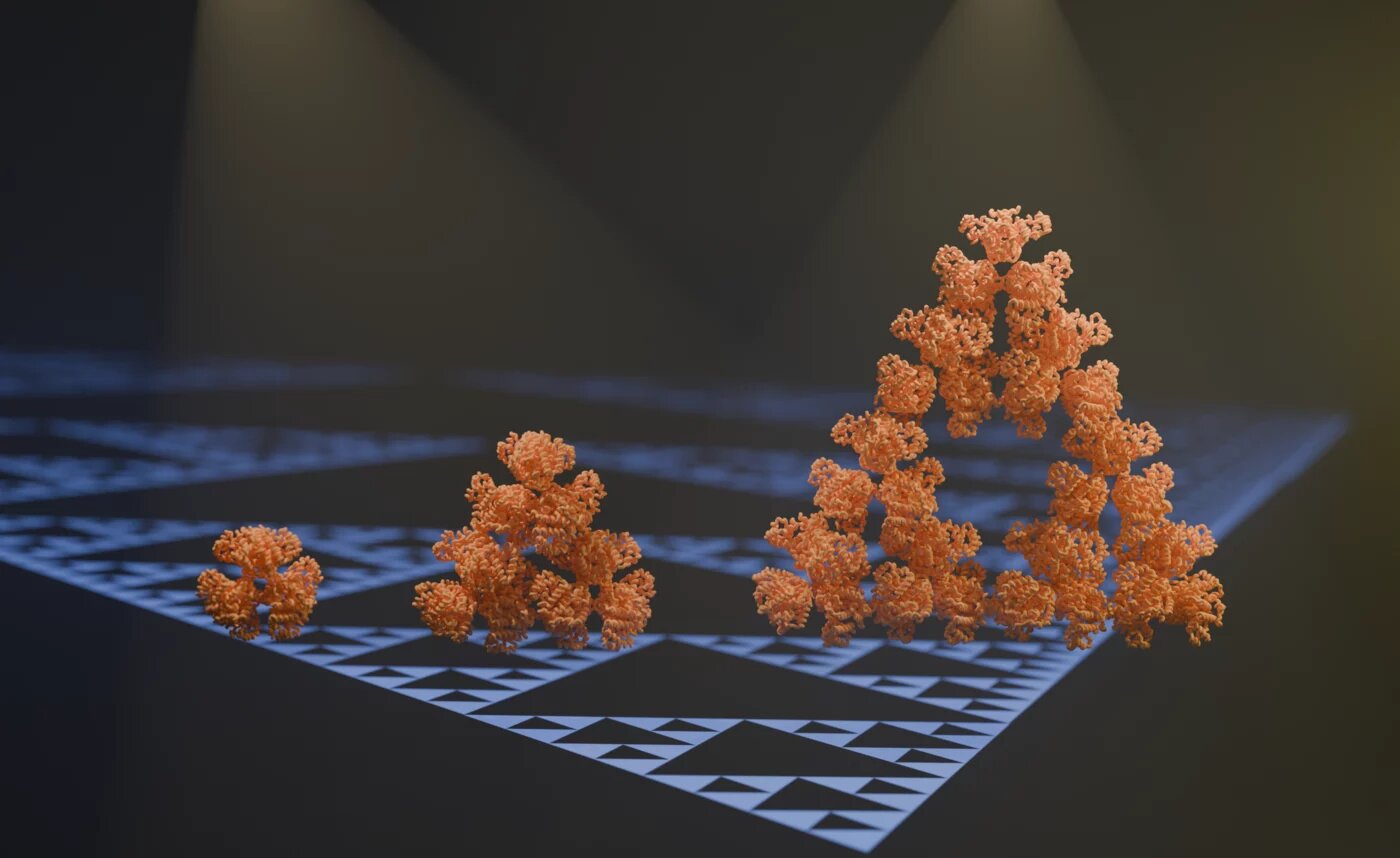Discovery of the first fractal molecule in nature

🌈 Abstract
The article discusses the discovery of the first regular molecular fractal in nature - a microbial enzyme called citrate synthase from a cyanobacterium that spontaneously assembles into a Sierpinski triangle pattern. The researchers used electron microscopy and evolutionary biochemistry studies to determine that this fractal structure may have emerged as an evolutionary accident, as it does not seem to serve any particular function for the cyanobacterium.
🙋 Q&A
[01] Discovery of the First Fractal Molecule in Nature
1. What is the key discovery described in the article?
- The researchers discovered the first regular molecular fractal in nature - a microbial enzyme called citrate synthase from a cyanobacterium that spontaneously assembles into a Sierpinski triangle pattern.
2. How did the researchers stumble upon this discovery?
- The researchers say they discovered the fractal structure completely by accident when they took electron microscope images of the enzyme. They were surprised and almost couldn't believe what they were seeing.
3. What makes this fractal structure unusual compared to other self-assembled molecular structures?
- Most self-assembled molecular structures lead to regular patterns that become smooth on large scales. This fractal structure is unique in that it maintains a repeating triangular pattern across different scales, with larger triangles made up of smaller triangles.
4. How did the researchers determine the molecular structure of this fractal assembly?
- The researchers worked with structural biologists to determine the molecular structure using electron microscopy. They faced challenges with their image averaging techniques, as the algorithm kept focusing on the smaller triangles rather than seeing the larger fractal structure.
5. What key structural feature allows this enzyme to form a fractal pattern?
- Unlike typical self-assembled protein structures that are highly symmetrical, the researchers found that the assembly of this enzyme violates the rule of symmetry. Different protein chains make slightly different interactions at different positions, which allows the Sierpinski triangle fractal pattern to form.
[02] Evolutionary Accident or Functional Adaptation?
1. What did the researchers find about the function of this fractal enzyme for the cyanobacterium?
- When the researchers genetically manipulated the cyanobacterium to prevent the citrate synthase from assembling into the fractal triangles, the cells still grew just as well under various conditions. This suggested the fractal assembly may just be a harmless evolutionary accident.
2. How did the researchers test the theory that this is an evolutionary accident?
- The researchers used a statistical method to back-calculate the protein sequence of the fractal protein as it was millions of years ago. By recreating these ancient proteins, they were able to show that the fractal arrangement arose quite suddenly through a small number of mutations and was then lost again in several cyanobacterial lineages, only remaining intact in this single bacterial species.
3. What does this case suggest about the potential for more undiscovered molecular surprises in nature?
- The fact that such a complex-looking molecular fractal could emerge so easily through evolution suggests that more unexpected and beautiful molecular assemblies may still be waiting to be discovered in nature.